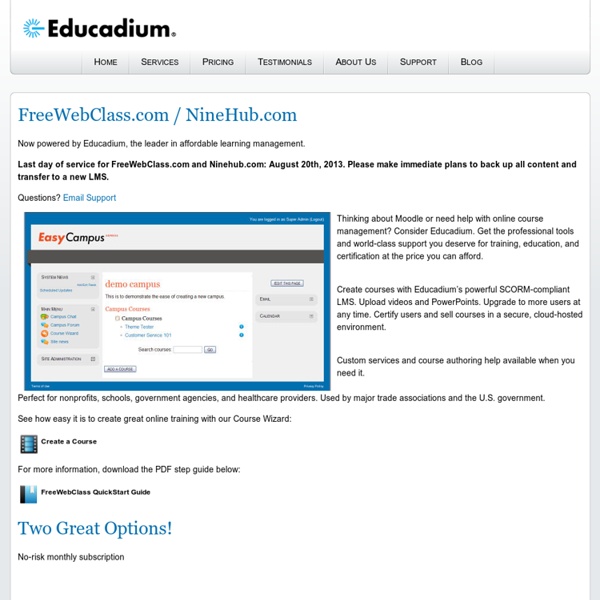NGAkids
SEA-SAWS SEA-SAWS is fun for kids of all ages. Select photographs of natural and man-made objects, then arrange the pieces to create a seascape or an abstract composition. The BUILD tool helps you construct animated characters and set them in motion. (Shockwave, 7.5 MB)
Web 2.0 Tools
World Wide Web sites that use technology beyond the static pages of earlier Web sites A tag cloud (a typical Web 2.0 phenomenon in itself) presenting Web 2.0 themes Web 2.0 (also known as Participative (or Participatory)[1] and Social Web)[2] refers to websites that emphasize user-generated content, ease of use, participatory culture and interoperability (i.e., compatible with other products, systems, and devices) for end users. The term was invented by Darcy DiNucci in 1999 and later popularized by Tim O'Reilly and Dale Dougherty at the O'Reilly Media Web 2.0 Conference in late 2004.[3][4][5][6] The Web 2.0 framework specifies only the design and use of websites and does not place any technical demands or specifications on designers.
SOLO
SOLO Literacy Suite Research & Case Studies Resources Pricing Request A Quote | SOLO Writing Coach SOLO is a literacy suite of the most popular assistive technology accommodations, including a text reader, graphic organizer, talking word processor, and word prediction. The new version (SOLO 6) was completely redesigned to be simple to use, yet powerful for students who struggle to read and write. For these students, SOLO 6 places all of the right tools at their fingertips. The accommodations in SOLO put students in charge of their own learning.
Running on Empty
Computer science and the technologies it enables now lie at the heart of our economy, our daily lives, and scientific enterprise. As the digital age has transformed the world and workforce, U.S. K–12 education has fallen woefully behind in preparing students with the fundamental computer science knowledge and skills they need for future success.
Helicopter Parent
A helicopter parent (also called a cosseting parent or simply a cosseter) is a parent who pays extremely close attention to a child's or children's experiences and problems, particularly at educational institutions. Helicopter parents are so named because, like helicopters, they hover overhead. Origins[edit] The term "helicopter parents" is a pejorative expression for parents that has been widely used in the media. The metaphor appeared as early as 1969 in the bestselling book Between Parent & Teenager by Dr.
Differentiated instruction
Differentiated instruction and assessment (also known as differentiated learning or, in education, simply, differentiation) is a framework or philosophy for effective teaching that involves providing different students with different avenues to learning (often in the same classroom) in terms of: acquiring content; processing, constructing, or making sense of ideas; and developing teaching materials and assessment measures so that all students within a classroom can learn effectively, regardless of differences in ability.[1] Students vary in culture, socioeconomic status, language, gender, motivation, ability/disability, personal interests and more, and teachers need to be aware of these varieties as they are planning their curriculum. Brain-Based Learning[edit] Differentiation finds its roots and is supported in the literature and research about the brain. As Wolfe (2001) argues, information is acquired through the five senses: sight, smell, taste, touch and sound.
Special Education
Special education programs in the United States were made mandatory in 1975 when the United States Congress passed the Education for All Handicapped Children Act (EHA) in response to discriminatory treatment by public educational agencies against students with disabilities. The EHA was later modified to strengthen protections to people with disabilities and renamed the Individuals with Disabilities Education Act (IDEA). The federal laws require states to provide special education consistent with federal standards as a condition of receiving federal funds. IDEA entitles every student to a free and appropriate public education (FAPE) in the least restrictive environment (LRE).
Gifted education
Gifted education (also known as Gifted and Talented Education (GATE), Talented and Gifted (TAG), or G/T) is a broad term for special practices, procedures, and theories used in the education of children who have been identified as gifted or talented. There is no standard global definition of what a gifted student is. In 2011, the National Association for Gifted Children published a position paper that defined what a gifted student is.



